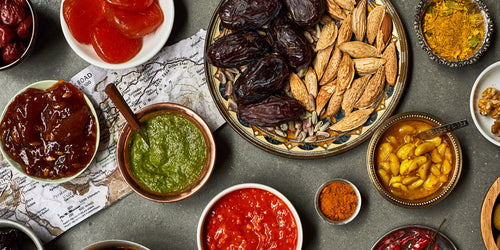Your Cart is Empty
“Sri Lankan food has a reputation for being very spicy,” Skiz Fernando says, “but there’s layers of heat: chile powder, dried chiles, and fresh chiles all in one dish. No one can really tell me how Sri Lankan curry powder came together, but it’s the most complex curry powder I’ve come across in my travels.”
Every few months, Fernando breaks out a hefty wok in his Baltimore, Maryland kitchen to roast a fresh batch of curry powder for his family and friends. He individually roasts cumin seeds, cardamom pods, pandan leaves, and nearly a dozen other herbs and spices until they begin to smoke, then grinds them all into a pungent, smoldering seasoning. It demands a quick eye and nose. “Each spice has a different burning point, so you have to pay attention to the color and smell. You can’t be on your phone or talking to someone.”
Roasting spices before grinding excites the aromatic oils responsible for their indelible flavors. By roasting them to the brink of burning, you bring those flavors into razor focus and suffuse them with a burning, espresso-like intensity. The technique makes for a curry unlike anything else.

In India, the term “curry powder” has as much to do with genuine home cooking as ranch dip. When cooks across the country make a dal, sabzi, or korma, they don’t reach for a one-size-fits-all spice blend created by British colonizers; they toast and grind spices individually selected for a particular dish. However in neighboring Sri Lanka, the “curry” and “curry powder” carry a lot more weight, so much so that, as Fernando puts it, “rice and curry” is the casual name for what amounts to the national meal. That’s also, not coincidentally, the name of his 2009 cookbook, a 200-page introduction to the island’s potent cuisine.
Over in Sri Lanka, Fernando explains, most kitchens keep a house blend of two curry powders: a mild unroasted mix for vegetarian dishes, and a more intense roasted version for non-veg ones that’s unique across South Asia. “Every family has their own recipe for curry powder, and most places have a local grinding house where you can buy ingredients and get them roasted and ground for your own blend. It’s a huge operation, because in that [hot, humid] weather, the last thing you want to be doing is roasting spices in your house.”
Once you have your roasted curry powder, you’ll want to pick up some curry leaves, which Fernando calls “a signature flavor of Sri Lankan cuisine.” His roasted curry powder has curry leaves in the mix already, but additional ones sizzled in oil bring new life to a green bean saute or dal. Also get some ground chile, as Fernando’s curry blend is actually chile-free so you can dial in the heat to your specific needs. (You may see “Jaffna-style” Sri Lankan curry powder, Fernando points out. This refers to a blend that has ground chile included.) With these seasonings and some coconut milk, tamarind, and gamboge, you’re ready to cook all kinds of roasty, spicy, tangy Sri Lankan curries.
Here’s an easy first step: Fernando’s recipe for Sri Lankan chicken curry from Rice and Curry. It’s leaner and meaner than the cream- and cashew-enriched chicken curries cooked in North Indian style American restaurants. Tangier too, thanks to key additions of apple cider vinegar and tomato paste. The lighter, more cohesive sauce lets the roasted curry powder’s smoky kick shine through, especially once teased out with some curry leaves, lemongrass, and ginger.
Of course, to make it count, you need a good roasted curry powder. “I make this stuff primarily for myself and my family,” Fernando says with a laugh, “so it’s gotta be good.”
Recipe: Sri Lankan Chicken Curry






